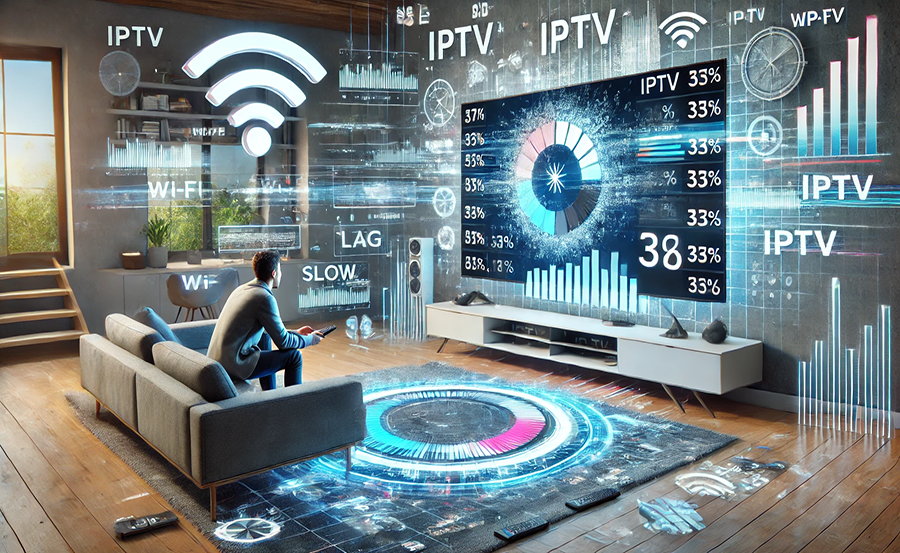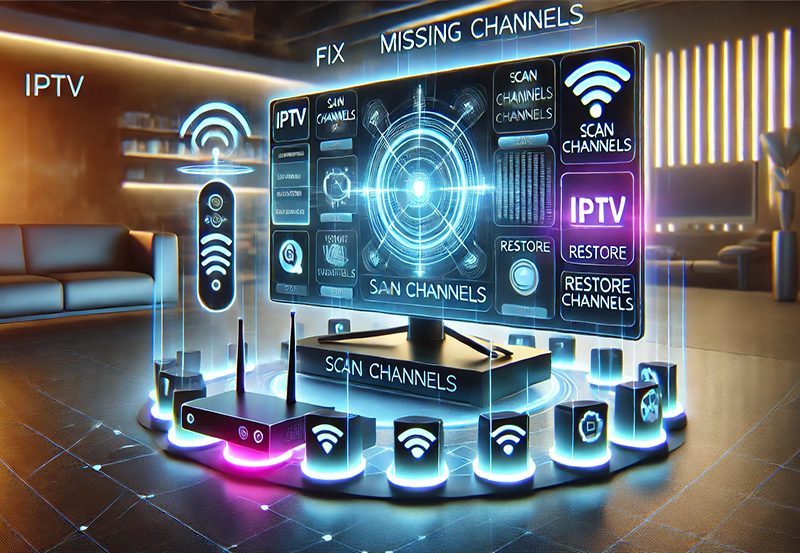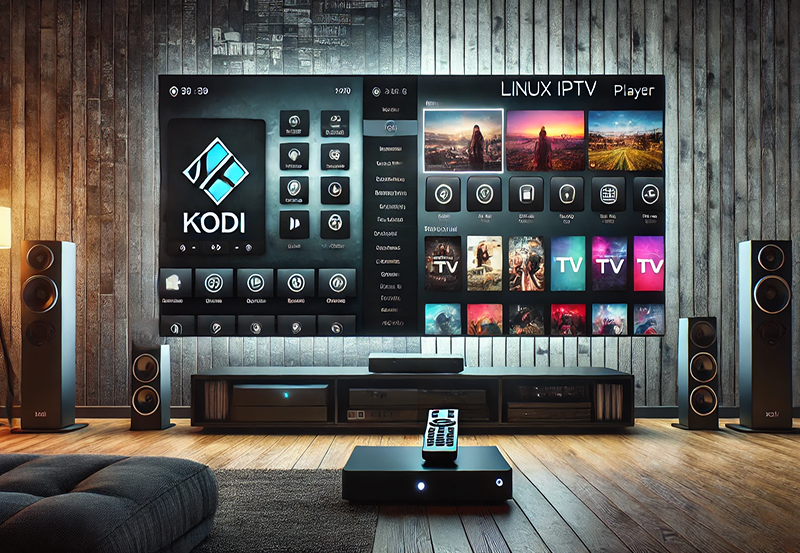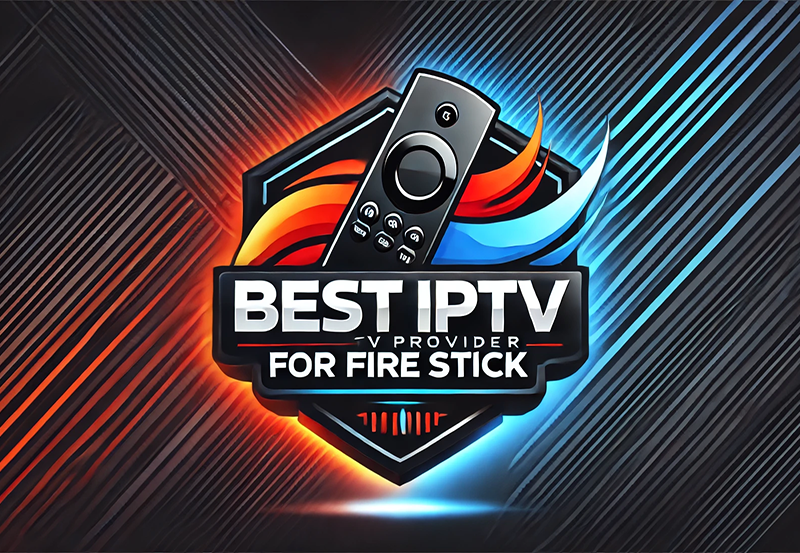With the rapidly evolving landscape of digital media consumption, IPTV has emerged as a popular option for streaming television content. While it offers numerous advantages such as flexibility and a plethora of channels, maintaining high-quality IPTV viewing over a Wi-Fi connection can sometimes be a challenge. In this article, we will take you through the essentials of optimizing your IPTV quality on a wireless network, ensuring that your viewing experience is uninterrupted and enjoyable.
Understanding IPTV and Its Significance
Internet Protocol Television (IPTV) allows viewers to stream live television and on-demand content through the internet. Unlike traditional formats, IPTV provides a more flexible and customized viewing experience. Many users have already shifted to IPTV, attracted by the affordability and broad selection of the best IPTV channels.
The Rise of IPTV
The technology behind IPTV has been around for a while, transforming the way viewers engage with their favorite shows and movies. Services offering affordable IPTV solutions have multiplied, providing a diverse catalog for viewers to choose from. However, as more households adopt this technology, optimizing the quality becomes crucial for a satisfying viewing experience.
Benefits of IPTV
- Flexibility: Access to content from various devices.
- Variety: Choose from numerous channels without being restricted to traditional cable packages.
- On-Demand Content: Watch shows at your convenience, not bound to broadcast schedules.
Challenges of Streaming IPTV on Wi-Fi
Despite its numerous advantages, IPTV streaming can be plagued by issues when run over a Wi-Fi connection. These challenges can include buffering, poor picture quality, and even complete service disruptions.
Common Streaming Issues
Buffering and lagging are perhaps the most common issues experienced by subscribers trying to watch IPTV through Wi-Fi. These disruptions can be extremely frustrating, especially during critical moments in a live sporting event or a gripping movie scene. Buy 1 Year IPTV Subscription and Enjoy Unlimited Content
Impact of Network Interference
Network interference from various devices sharing the same Wi-Fi can significantly degrade performance. This interference may come from smartphones, tablets, and other connected devices. Such traffic can lead to a noticeable drop in streaming quality.
Congestion and Bandwidth
With multiple devices consuming bandwidth, IPTV services may receive less priority, resulting in pixelated images or interrupted streams. Therefore, understanding and managing bandwidth utilization is key to enhancing IPTV performance.
Enhancing IPTV Quality: Tips and Techniques
Given the intricacies of optimizing IPTV over Wi-Fi, a strategic approach is necessary. Let’s explore some techniques to improve your IPTV quality for a superior viewing experience.
Optimize Your Wi-Fi Setup
Having a robust Wi-Fi setup is foundational to achieving high-quality IPTV streaming. Minor tweaks and configurations can make a substantial difference.
Positioning the Router
Evaluate where your Wi-Fi router is placed. Ideally, it should be positioned centrally or close to your TV or streaming device. Obstacles and walls can weaken the signal, causing interruptions or lower video quality.
Use Dual-Band Routers
Leverage the benefits of a dual-band router. The 5GHz frequency band, while supporting shorter range, provides faster speeds compared to the 2.4GHz band. Use this band where possible to avoid interference with common household appliances.
Implement Quality of Service (QoS)
Quality of Service (QoS) is a feature that prioritizes internet traffic, ensuring IPTV gets the bandwidth it needs for a clear, uninterrupted stream.
Setting QoS on Your Router
Accessing your router’s settings via a browser, you can configure QoS to prioritize IPTV traffic. This adjustment helps allocate more bandwidth to streaming services, particularly when the network is under heavy load from multiple devices.
Reducing Network Congestion
Minimizing network congestion is critical for maintaining consistent IPTV quality. Identifying and managing heavy bandwidth consumers on your network is essential.
Limit Bandwidth-Hogging Activities
Refrain from downloading big files or streaming from multiple devices simultaneously. Allocate specific times for such activities to not coincide with your IPTV viewing sessions.
Future-Proofing Your IPTV Experience
Ensuring an optimal IPTV viewing experience is not just about current setup improvements; it also involves planning for future advancements in IPTV technology and network standards.
Invest in the Latest Streaming Technology
Keeping up with technological advancements can greatly impact your IPTV quality. Adopting the latest streaming devices and platforms can provide better performance and feature support.
Explore Fiber Optic Internet
Consider upgrading to fiber optic internet for a more stable and faster connection. Fiber optic networks offer significant advantages over standard broadband, particularly for high-bandwidth activities like IPTV streaming.
Regularly Update Your Equipment
Set reminders to update your router’s firmware regularly. Firmware updates often include performance improvements and security enhancements critical for optimal streaming performance.
Thinking Beyond the Obvious
While standard tips and practices are essential, sometimes a creative or less conventional approach can make a substantial impact on streaming quality. Don’t hesitate to experiment and find what specifically enhances your IPTV setup.
Try Powerline Adapters
Powerline adapters use existing electrical wiring to transmit data, offering a viable option when extending a Wi-Fi network proves challenging. This setup can significantly reduce latency and improve IPTV streaming quality.
Experiment with Mesh Wi-Fi Systems
Mesh systems provide widespread coverage and are particularly useful for large or unconventional spaces where a single router struggles. Implementing a mesh Wi-Fi system could alleviate connection drops and enhance speed and reliability.
FAQs on Enhancing IPTV Quality Over Wi-Fi
1. What is the best broadband speed for IPTV?
A minimum of 25 Mbps is recommended for HD IPTV streaming, while 50 Mbps or higher is advised for 4K content.
2. Can a VPN improve my IPTV streaming quality?
A VPN can sometimes route your connection through less congested pathways, potentially improving performance. However, it can also add latency, so results may vary.
3. How do I determine if my Wi-Fi signal is strong enough?
Use a Wi-Fi analyzer tool to check for signal strength and interference levels within your home. Adjusting your router or optimizing placement can improve signal quality.
4. Is Ethernet better than Wi-Fi for IPTV?
Yes, an Ethernet connection typically provides a more stable and faster internet connection than Wi-Fi, making it preferable for IPTV streaming.
5. Can I use a mobile hotspot for IPTV streaming?
While technically possible, mobile hotspots often suffer from inconsistent speeds and data latency, which can degrade IPTV quality compared to a dedicated home internet connection.
6. How often should I reboot my router for optimal performance?
Rebooting your router once a month can help maintain optimal performance and network health by clearing cache and resolving connection issues.
Maximizing the quality of IPTV over Wi-Fi involves a multifaceted approach. By adopting these recommendations and staying informed about technological advancements, you can enjoy a seamless and superior IPTV viewing experience. Whether it’s upgrading your hardware, optimizing your current setup, or experimenting with new solutions, improving your IPTV quality is well within reach.





